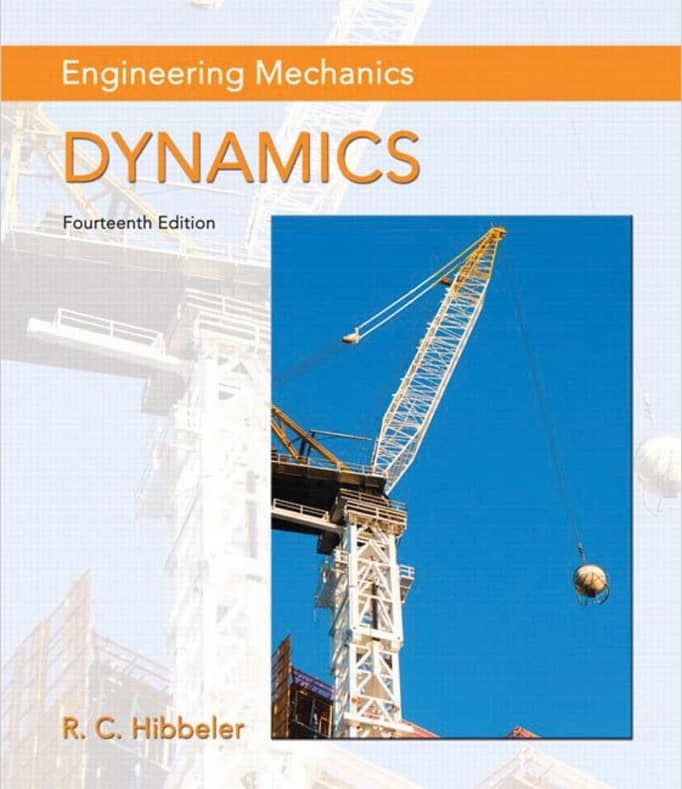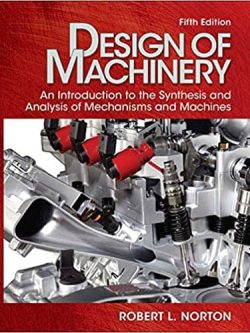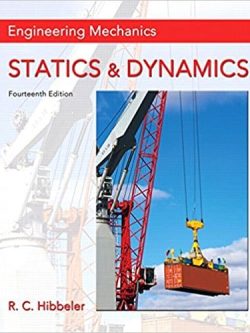Specifications
| book-author | Russel Hibbeler |
|---|---|
| publisher | Pearson; 14th edition (April 10; 2015) |
| file-type | |
| language | English |
| isbn10 | 133915387 |
| isbn13 | 9780133915389 |
Book Description
The 14th edition of Engineering Mechanics: Dynamics (PDF) does an excellent job of presenting both the theory and application of engineering mechanics in a way that is easy to understand and comprehensive. College students are given the tools they need to achieve their academic goals in Engineering Mechanics by drawing on Professor Hibbeler's regular classroom expertise as well as his knowledge of how mechanics students learn. This text is fashioned by the comments and suggestions of hundreds of reviewers in the teaching profession; in addition, a large number of the author's students have contributed to its development.
There are new Preliminary Problems included in the 14th Edition PDF. These problems are designed to assist students of engineering and mechanics in developing conceptual comprehension and building problem-solving abilities. The e-book contains a wide variety of questions drawn from a wide variety of engineering fields, with an emphasis on practical, realistic scenarios that are encountered in professional practice, and with varied degrees of difficulty in each problem.
A wide array of problem types emphasize practical, real-world scenarios that are likely to be faced in professional practice. These problems come in a variety of levels of complexity to provide students with the necessary amount of practice.
There are various standard issues that describe genuine scenarios that are experienced in engineering practice. These problems exist in addition to the Fundamental and Conceptual problems, which can be found farther down in this section. Throughout the entirety of the book, you will find problems that make use of either SI or FPS units. This relative balance is maintained throughout. The problems in the majority of problem sets are arranged from easiest to most difficult, and the solutions are typically supplied at the back of the book (with an exception of every fourth problem; as indicated by an asterisk).
NEW | Preliminary Problems are interspersed throughout the text and come before the Fundamental Problems. Their purpose is to gauge the students' conceptual comprehension of the material being discussed. The solutions to the Preliminary Problems require very little or no calculation, and their primary purpose is to assist students in acquiring a fundamental comprehension of the concepts before those concepts are applied numerically. In the very back of the book, you'll find answers to all of the problems.
The Fundamental Problems come right after the Example Problems and are designed to help students develop their problem-solving skills before they attempt to tackle the Standard Problems that come later. They provide students with straightforward applications of the concepts that they have just learned. Exam preparation has never been easier than it is with the help of these problems, which may also be utilized in the future to be ready for the Fundamentals in Engineering Exam. In the back of the book, you'll find detailed explanations and answers to each and every one of the Fundamental Problems.
At the end of each chapter, there is a set of problems called conceptual problem sets. These problem sets feature conceptual circumstances that relate to applying the principles provided in that chapter. The purpose of these analysis and design tasks is to get pupils thinking about a real-life scenario that is depicted in a picture. These projects can be given to the students when they have obtained some level of skill in the topic, and either the students can work on them individually or they can collaborate on them.
Methodologies for Research and Evaluation
The worked examples reflect the many problem-solving methodologies that are covered in the accompanying Procedures for Analysis and exemplify the application of fundamental theory to practical engineering situations.
Example Problems
The worked examples reflect the many problem-solving methodologies that are covered in the accompanying Procedures for Analysis and exemplify the application of fundamental theory to practical engineering situations.
Important Points
The most crucial ideas covered in a section are summed up in the Important Points section, which also highlights the aspects of the theory that should be considered when applying it to real-world scenarios.
Photos Taken in the Real World
The author, R.C. Hibbeler, took many of the photographs that are used throughout the PDF booklet to show how the pertinent ideas relate to real-world circumstances.















Reviews
There are no reviews yet.